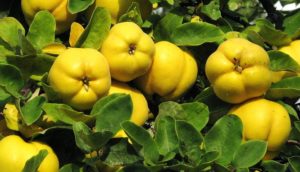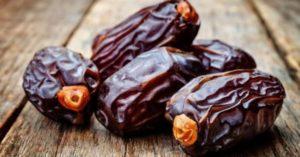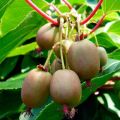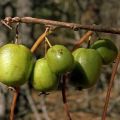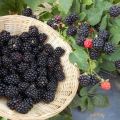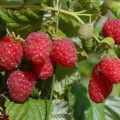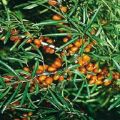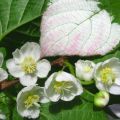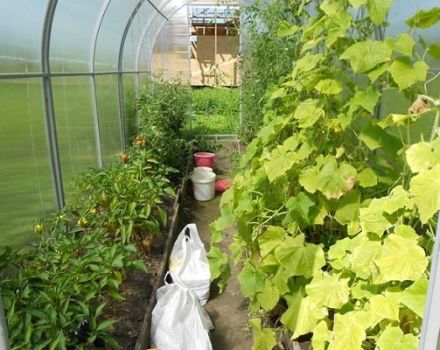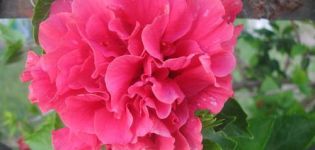Growing and caring for actinidia in Siberia, a description of the best varieties of kiwi
Actinidia is often found in Siberia; cultivation is carried out according to special methods. The berries have a unique taste and are saturated with essential minerals, including vitamin C. The crop must be stored without deterioration.
Can actinidia be grown in Siberia?
The plant is famous for its taste and attractive appearance of the shrub, which is often used as a decorative garden decoration. For regions such as Siberia, frost-resistant varieties are suitable. The plant is thermophilic, so many believe that it is impossible to grow actinidia in Siberia. In the summer, the air temperature in the Siberian regions warms up to +27, so the cultivation of a crop is possible, however, to obtain a harvest, care must be taken.
Suitable varieties
Actinidia berries are small in size and taste like kiwi and are highly preserved after harvest. The following varieties can be used for growing in Siberia:
- Dr. Shimanovsky. The hybrid has an attractive shrub appearance and is often used for landscaping gardens. The bush must be planted near fences or buildings, the berries are yellow, after ripening they fall off.
- Adam. The appearance of the culture is distinguished by white and pink leaves among the green massif. Liana grows rapidly in length. The berries are green, oblong.
- Queen of the garden. It differs in the size of the fruits, which reach up to 4 grams. Bushes grow up to two meters. Branches weave over the fences.
- Waffle. This crop variety is distinguished by the taste characteristics of fruits with a large presence of sugar. The fruit weighs up to 3.5 grams. The bushes are vigorous, sometimes reaching a height of 5 meters.
- People's. This variety has a brown berry color and is distinguished by resistance to diseases, as well as the presence of strawberry notes in the taste.
- Hope. The variety is distinguished by immunity and early ripening of fruits.
When choosing a variety, it is necessary to take into account the type of soil and features of plant care.
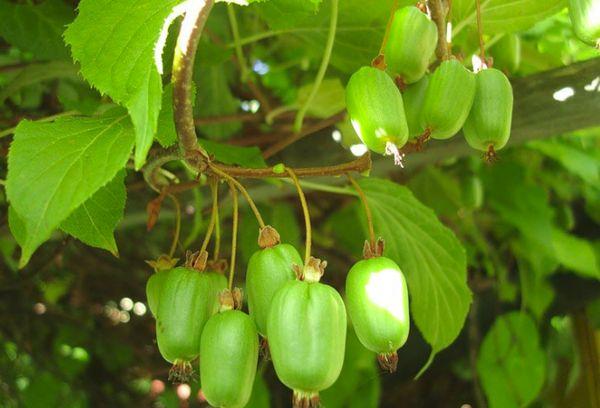
Features of growing a plant in this region
The Siberian region is distinguished by its climate and soil, therefore, when growing, it is necessary to observe certain features for the development of the plant and obtaining the necessary harvest.
Site selection and soil composition
The plant belongs to perennials, therefore, when choosing a soil, it is necessary to take into account all the features, otherwise the actinidia may die.
The soil must meet the following requirements:
- neutral acidity;
- preference is given to loamy fertile soils;
- the amount of moisture is moderate, the accumulation of liquid can lead to rot in the root area.
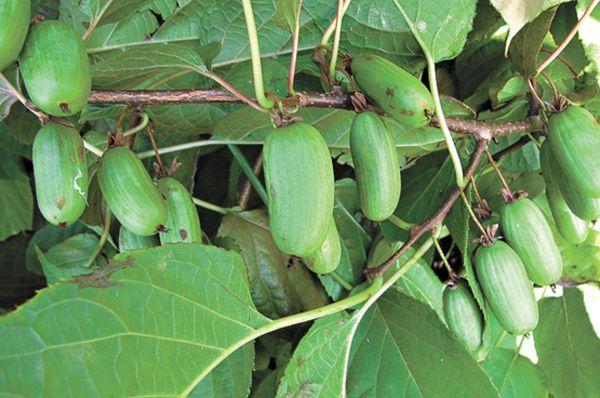
When choosing a place, it is necessary to give preference to a sunny area, mainly on a hill. Since the shoots of the bush look like vines, it is necessary to provide a fence along which the branches will curl in the future. The bush should have a large amount of space; an area with large quantities of trees is not suitable for planting.
When to plant
Actinidia is planted in the Urals in the spring season. In autumn, the culture may not have time to get stronger before the first frosts. In the spring, planting material is planted in early May, when the air warms up.
If there are still slight frosts, the plant can cope on its own without harm to the roots and shoots.
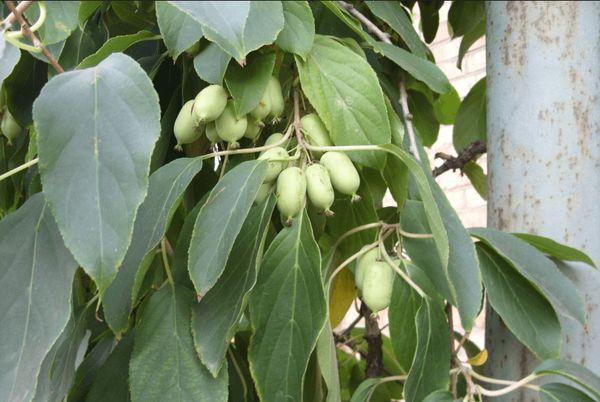
Important. To protect the seedling from possible low temperatures, it is necessary to use a plastic bag in the first few weeks after planting, which covers the culture at night.
How to choose the right seedling
When choosing planting material, the following features must be considered:
- The roots of the culture should be closed, as they can very often be damaged during transportation.
- The cuttings should be free of seals and damage.
- The cutting should be no more than 1 year old. Such planting material quickly adapts to a new growth site.
- It is necessary to purchase seedlings in specialized places. When buying, it is necessary to clarify the availability of both male and female seedlings.
Seedlings cannot be stored for a long time. Therefore, after purchase, it is recommended to immediately plant the plant in the soil, otherwise the cutting will weaken.
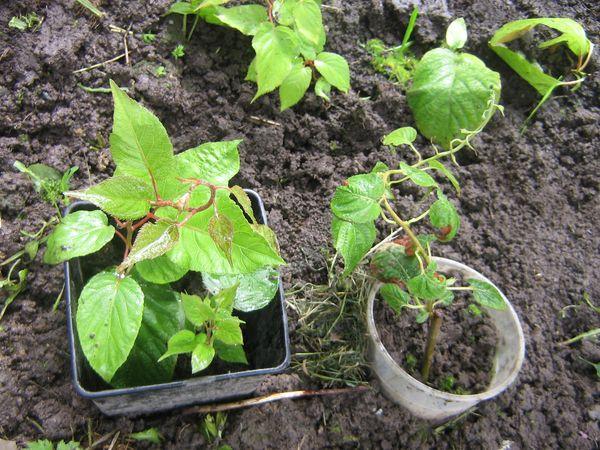
Landing
During the planting process, the following rules must be observed:
- Clear the planting site of vegetation. Dig a hole 40 cm deep.
- A drainage layer is laid at the bottom of the hole.
- The soil that was removed from the hole must be mixed in equal proportions with humus, a glass of superphosphate and 50 grams of potash fertilizer.
- A quarter of the pit is filled with a nutrient composition, forming a mound.
- The stalk is freed from the film, which preserves the integrity of the lump on the roots, the free root processes on the mound are carefully straightened. The remaining nutrient mixture is poured into the hole and tamped.
- A pole is installed near the cutting to support the plant during growth.
- The well is watered with plenty of warm water.
When planting a culture, the distance between the holes must be at least 60 cm.
Subtleties of care for actinidia in Siberia
Actinidia is often used as a decoration, but in order to get a harvest, you must follow the rules for caring for the plant.
Watering
The plant does not like excessively moist soil, which can lead to the appearance of diseases. The culture is moistened as needed. On average, watering is carried out every 3 days. At the planting site of the culture, it is necessary to make drainage to drain excess fluid.
Pruning
Plant pruning begins in the second year of growth. When pruning for the first time, remove all shoots except 2-3 strong vines. In the next year, a few more shoots are left to form a bush. The left shoots must be tied to a support so that they can curl in a vertical direction.
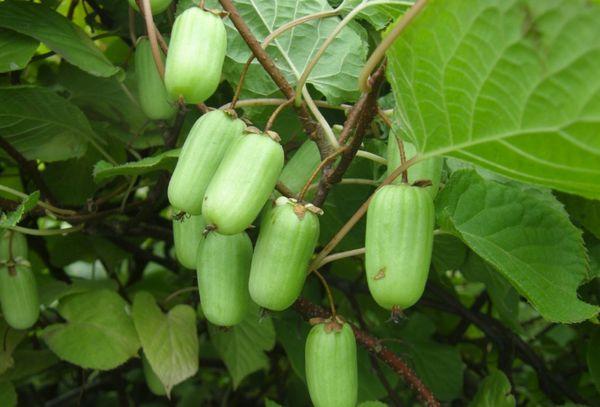
It is necessary to remove damaged branches and the tops of the vines for several buds annually.In the third year of growth, it is necessary to thin out the bush, removing broken branches and shortening the shoots on which the fruits are formed.
Trellis
In order for actinidia not to damage the shoots and form a bush, it is necessary to make a special support, which is called a trellis. You can make it according to the following algorithm:
- prepare branches with a diameter of 1 cm in the amount of 20-30 pieces;
- dig in the required number of branches at the same distance;
- bind branches to horizontally dug-in instances, forming a network at the same distance;
- in places where rhombuses are formed, it is necessary to additionally attach a wire to strengthen the structure;
- protruding branches are cut off, and a section is obtained;
- the number of such sections depends on the number of bushes.
Trellis can be made from any material. This type of support is mounted in the second year of plant development.
Important. In order not to use a support, the culture can be planted near a building on which a mesh is previously mounted from a wire.
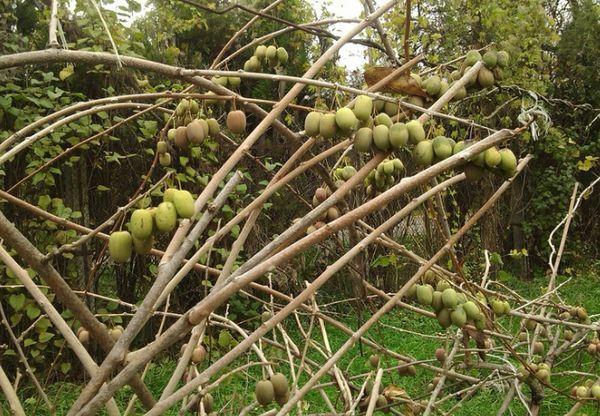
Top dressing
Fertilization is carried out according to the following scheme:
| Fertilizer type | Application period |
| Potassium salt | It is introduced into the ground in April (30 grams per square meter) |
| Phosphate fertilizers | Used in May |
| Wood ash | Introduced in the middle of summer |
| Superphosphate | Used in September in the amount of 35 grams per square meter |
| Humus | Before sheltering plants for the winter |
Timely feeding will stimulate the culture to develop and form fruit.
Pest and disease control
Actinidia has strong immunity to diseases, but the following types of problems may occur:
- Phylostictosis - refers to the fungal type of the disease. More often it affects adult types of culture and manifests itself in the form of spots on leaves and trunks. To eliminate the disease, it is necessary to spray with Bordeaux liquid.
- Ramulariasis - manifests itself in the form of white spots on the leaves. To eliminate the pathology, damaged shoots are removed. The bush is treated with Bordeaux liquid.
- Powdery mildew - appears in the form of plaque on the leaves. For removal, it is necessary to spray with a solution of soda ash.
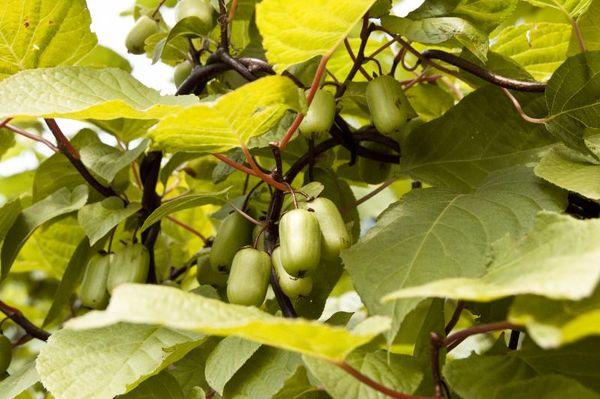
Among the pests that can occur on actinidia, it is necessary to highlight:
- leaf beetle - damages leaves and young shoots, as a result of which the plant withers;
- scale insect - affects shoots and fruits of culture.
For removal, you can use Bordeaux liquid or a light solution of copper sulfate. In difficult cases, it is necessary to use chemicals against pests.
Breeding culture
The propagation of actinidia is done in the following ways:
- The use of arc layers - carried out in the spring. One young shoot is selected, which is covered with soil and left until the roots appear. After a year, the shoot is separated from the mother bush and transplanted to a new location.
- Cuttings. For reproduction, it is necessary to cut off the annual shoot and divide it into several parts. Each segment should have 3 buds. Place the cuttings in water. Then plant it in the ground and cover with foil or glass jar.
- Seeds. To get seedlings, you need to take a ripe fruit and mash it with a fork. The resulting gruel is washed with plenty of water, the seeds are dried and stored in a tissue bag until planting. Seeds are planted for seedlings in February using special containers for seedlings.
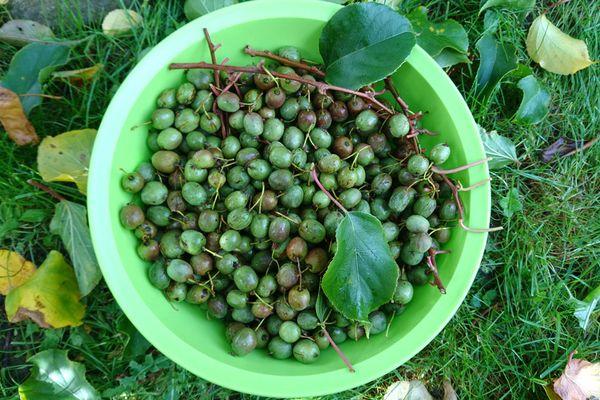
Propagation by cuttings is the method used. Such plants adapt faster to a new place and tolerate diseases easier.
Harvesting actinidia in Siberia
The harvest time of a crop depends on the variety. Actinidia in Siberia ripens in early August, late varieties ripen in mid-September.Berries can be picked ahead of time for further storage. To do this, they must be spread in a thin layer on the windowsill and mixed regularly for ripening from all sides.
Cultivation of culture in Siberia does not require complex care. To obtain a harvest, it is necessary to choose varieties that withstand low temperatures and adapt to sudden changes in temperature. Berries are used for fresh consumption, as well as preparations for the winter.
